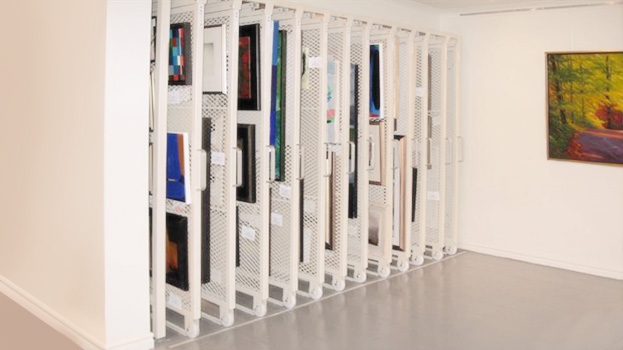Whether you are an artist or someone who just loves to collect art, finding the perfect and safe place of storage for your art can be daunting. Even if you have a studio in your place, such place can only be good up until your collection of art will grow. And, the more work of art you will store in your house, the higher the likelihoods for accidents to happen. Instead of jeopardizing your work and your collection, place them all in a storage unit. Having a proper storage place for your artwork is also helpful in making things easy for you especially tracking what you have and it will also help free up space in your studio.
Do not store in an attic, basement or garage.
A lot of people have huge space in their attic, basement or garage which makes it a logical space for most people to store their paintings and art. However, these places are known for their high humidity and temperature changeability which can ruin any work of art. Increased humidity can make a wood frame and canvas swell while dry air can make them shrink.
Store painting in a storage facility that has climate control.
Make sure that your works of arts are stored in a place that has stable humidity and temperature levels. The ideal environment for most types of art is 50% humidity and at 70 degrees. If your storage area can’t maintain the ideal environment it is best that you consider storing them in a storage facility that has climate control. Such facilities are specifically designed for preserving artwork.
Store framed paintings vertically.
Paintings not stacked properly can be prone to damage due to pressure, so it is very important to vertically store paintings just like books. Make sure that small frames and bulging screws aren’t leaning on bigger canvasses because this can lead to distortion. Aside from vertically storing them, you can also place them back to back with a cardboard placed in between them.
Store prints and posters flat.
If you have posters and prints, make sure they are not rolled up. Rolling them can lead to fold, wrinkles, and other damages. To store them, lay them flat in a drawer and away from natural light.
Wrap them up.
For artwork that needs long-term storage, try to wrap them with tissue or archival wrap. Framed work can be wrapped with archival polyethylene plastic. This wrap provides water and chemical resistance. Some artwork owners use kitchen plastic wraps in their artwork, although it’s not recommended due to the negative effect it has on the pigment and dyes of the artwork.
Watch the light.
UV light can lead to discoloration of color in paintings so it is advisable to keep them away from the sun.
Elevate.
Do not put paintings and other artwork on the floor. Put them on an elevated shelf. In this way, there is enough airflow and will also prevent the growth of mold and mildew. Concrete floors can damage paintings and artwork because of the dampness that comes from the floor.
After storing your paintings and artwork, it is also important to constantly check on them to make sure they are not damaged. Proper preparation and maintenance can greatly help in preserving your paintings and artwork for the future.
If you need storage in Lubbock for your fine art, contact Storage Zone today.















